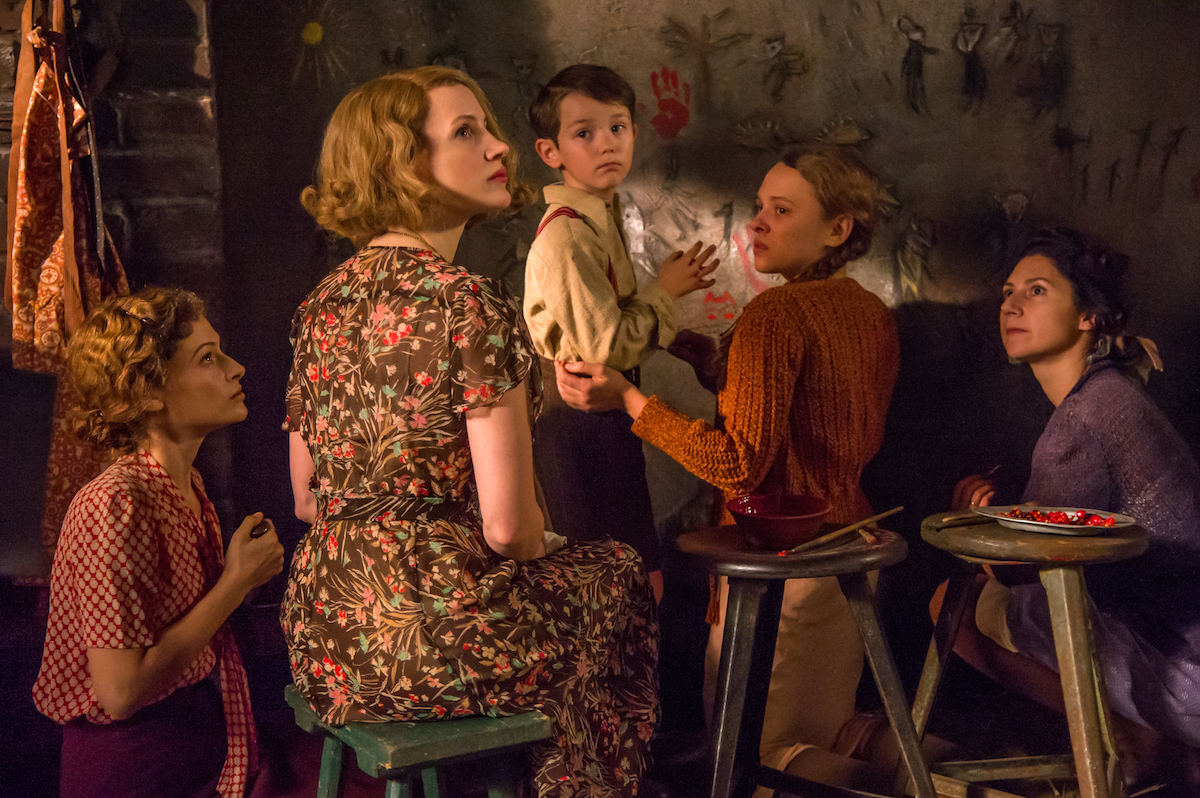
When The Zookeeper’s Wife opens in theaters on Friday — based on a 2007 book by Diane Ackerman — the names of Warsaw zoo director Jan Zabinski and his wife Antonina will take one step toward the ranks of those like Oskar Schindler, whose heroism during the Holocaust is famous worldwide thanks to a movie. After the Germans bombed the zoo and stole some of its precious animals in 1939 and 1940, the Zabinskis turned it into a pig farm. They used the task of collecting scraps for their pigs as pretext to go into the Warsaw ghetto, but they were also able to smuggle Jews out and into a truck filled with pig feed. They ended up hiding Jewish people in the underground pathways connecting the animal cages at the zoo they managed.
Not all stories of non-Jews who actively helped to save Jewish lives during the Holocaust were so dramatic, or have been made into bestsellers, but of course that doesn’t make the stories any less important to share. Below are five such stories, compiled with the help of the United States Holocaust Memorial Museum in Washington, D.C., and the Museum of Jewish Heritage in New York City.
Leopold Socha: A non-Jewish sewage worker who discovered a 7-year-old Kristine Keren and her family living in a sewer underneath the Lwów ghetto. Her father, facing deportation, had broken ground through an apartment into the sewage system, where their family and some dozen other friends were hiding out. Socha fed and clothed the group, even bringing first-grade school books for the children, helping them remain hidden underground for 14 months. A green sweater that Keren’s grandma knitted for her before the war is on display at the United States Holocaust Memorial Museum.
Refik Veseli: A 16-year-old Albanian photography student who, in the fall of 1943, hid professional photographer Mosa or Mosche Mandil and his family, Jewish refugees from Yugoslavia, at his family home in the mountain village of Kruja. According to the Jewish Foundation for the Righteous, Mandil’s family had been on the run for a while, and had even been imprisoned in the city of Pristina from Oct. 1941 to May 1942, before Mandil won over the Italian prison guards by taking photos. Pleased with the images, the guards helped them escape to Italian-occupied Albania, where they settled in Kavajë and then Tirana, which they hoped would be safe. Mosa found a job at a local photography studio, where Veseli was his apprentice, but Germany occupied Albania in 1943. While hiding out at Veseli’s parents’ house, Moshe and his wife stayed in a barn while his children “lived openly as Muslim villagers.” After the liberation of Albania in October 1944, the Mandils left Kruja and re-opened their photo studio in Novi Sad, Yugoslavia. Refik Veseli followed them there to finish his professional photography training with Mosa.
Bronislawa Kurpi: A Polish-Catholic nanny to former Anti-Defamation League President Abe Foxman, who hid him for four years in the German-occupied Lithuanian city of Vilnius, where his family had fled from his birthplace in Poland. She had him baptized Henryk Stanislas Kurpi, and raised him as a Catholic and taught him how to pray with a rosary, on the fast-track to the priesthood. “I couldn’t play with children because I was circumcised,” he tells TIME. “Most hidden children that were saved were female because it was safer, when you’re taken to the bathroom.” After his parents returned for him, Kurpi fought them for custody, believing, he says, that she was saving him. But Foxman’s parents won out, and the family was smuggled into Austria’s “American Zone,” where they lived in a Displaced Persons camp until they were granted visas to the U.S. and moved there in 1950 when he was 10 years old. The family continued to send her food and money until she died.
Anna Soehnlein: A non-Jewish camp counselor and law student who helped many young Jews escape Nazi-occupied Amsterdam. Those she helped included 14-year-old Anita Meyer, whom she smuggled to southern Holland in May 1943. “Because her father worked for the Dutch railways, she was able to travel relatively freely while taking children to their hiding places,” explains the collection of the Museum of Jewish Heritage in New York City. Soehnlein was eventually caught and sent to an internment camp for having helped Jews. In January 1945, Anita’s parents were deported to the Westerbork transit camp, but they and Anita’s sister survived the war, and Anita reunited with them all in May 1945.
Nora and Karl Palasthy: Nora was a teacher in Bratislava and Karl was her husband. She became close to the family of one of her 10-year-old students Jan Braun — so close that when the Nazis invaded the Slovakian city, the Palasthys hid Jan and his family in their apartment. Jan hid “sometimes in a suitcase on top of a closet, while his parents hid in a coal cellar in the Palasthys’ basement,” explains the Museum of Jewish Heritage in New York City. ” Jan helped the adults make false identity papers, transferring ink from real papers using a potato.”
More Must-Reads From TIME
- The 100 Most Influential People of 2024
- The Revolution of Yulia Navalnaya
- 6 Compliments That Land Every Time
- What's the Deal With the Bitcoin Halving?
- If You're Dating Right Now , You're Brave: Column
- The AI That Could Heal a Divided Internet
- Fallout Is a Brilliant Model for the Future of Video Game Adaptations
- Want Weekly Recs on What to Watch, Read, and More? Sign Up for Worth Your Time
Write to Olivia B. Waxman at olivia.waxman@time.com